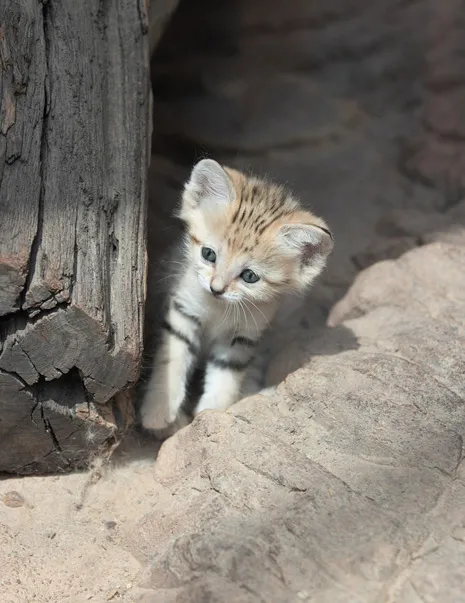About:
Did you know dense hair on the pads of the sand cat's feet protect them against the hot sands of the desert? Learn more about sand cats.
Care & Wellness:
Zookeepers at the North Carolina Zoo found a unique way to provide exercise for the sand cats: a cat-sized exercise wheel. Training the cats to walk on the wheel allows them to stay fit while burning energy and calories.
Behavior:
- Sand cats have an acute sense of hearing and patiently wait to hear prey moving under the sand.
- They are excellent diggers and will dig up rodents out of their burrows.
- These small cats are primarily nocturnal and solitary.
- They may share burrows but never occupy the same burrow at the same time.
Endangered Status
- Least Concern (LC)


